Culture Watch
THIS PAST MOVIE year I’ve been delighted by, among other things, nonviolent resolutions, a guy talking in a car, an Irish priest trying to do the right thing, and a five-dimensional bookcase. Here’s my list of the 10 best films of 2014 (many more are worthy, but 10 are all that will fit).
10. Pride. A delightful and stirring celebration of marginalized people turning their woundedness into helping others, as LGBTQ activists support the Thatcher-era British coal miners’ strike.
9. The Lego Movie. This turned out to be both the most unpredictably fun and one of the wisest films of the year. A brilliant critique of consumerism and political tyranny, with an ending that inverts the myth of redemptive violence.
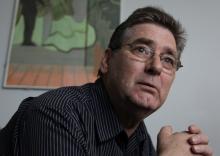
POET BRUCE WEIGL inhabits two places in his life, in his work. Two places that could not be more different. But in the course of our conversations, I come to think of them as a single place, the way two hands are part of a single body. One place is Lorain, Ohio. The other is Vietnam.
Ever since the Vietnam War ended, the life of this mill worker’s son has swung between those two far-flung poles.
I met Weigl at a Starbucks in Manhattan’s East Village. I was interviewing a friend of his, Adrie Kusserow, about her book of poems on South Sudan. Weigl was content just to drink his coffee and listen to us talk. He intervened only once, when Kusserow and I began decrying public indifference to South Sudan’s pre-independence history of slaughter, enslavement, and banishment by Sudan.
“If I may defend my fellow human beings here, there are so many places in the world today where there is suffering. It is understandable that people may miss one or two,” he said.
The suffering of the Vietnamese, and of soldiers like himself who fought in Vietnam, is still burned into his psyche like some gory tattoo. It is to be found in every one of his 13 books.

TOOTSIE, the 1982 Dustin Hoffman comedy in which a failing actor cross-dresses to win a part on a soap opera, is a lovely, problematic film (and just released in an excellent home edition from www.criterion.com). It’s controversial in some quarters for playing the idea of a man dressing as a woman for laughs: The joke is on any male-bodied person who challenges macho stereotypes. As when The Da Vinci Code attracted criticism for portraying a character with albinism as an insane assassin, like almost every other comparable movie has treated albinism, Tootsie represents a time when the extent of mainstream cinema’s engagement with what it thought constituted “trans” was to portray cross-dressing for laughs. But a cisgender straight character dressing up has little or nothing to do with the real stories of the “T” in LGBTQ.
Cinematic LGBTQ characters seem to evolve one step forward and a half back—beginning with their invisibility, then moving through psychopathy (the “evil queer” of Hitchcock’s Rope still shows up in The Lion King and The Avengers); martyrdom (Kiss of the Spiderwoman, Philadelphia, Brokeback Mountain); safe best friends (The Prince of Tides and My Best Friend’s Wedding); and eventually redemption (Milk, the wonderful recent Pride). The evolution continues: George Carlin’s gay best friend caricature in The Prince of Tides was in good faith, but would not pass muster today. We’re shaking off the idea that LGBTQ characters can only be suffering or sassy.
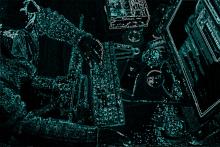
BY NOW MOST of us know that when we use the internet, we are giving up privacy and exposing ourselves to potential surveillance and fraud. But we probably didn’t know until recently that in poor and distant lands, souls are being stained and scarred for the sake of our internet browsing experience.
There’s an old saying that nobody really wants to know the details of making sausage or passing legislation. Now there’s an update: You really don’t want to know how—in a world peopled by thousands of internet-capable sickos, murderers, perverts, and fanatics—your social media feeds remain so remarkably free of beheadings, snuff videos, and child porn.
Like me, if you ever thought about that, you perhaps assumed that some miraculous algorithm was automatically filtering all the bad stuff. Well, think again.
In the early days of the internet, porn sites occasionally popped up in the course of ordinary, innocent internet use. But search engine filters and various parental control programs seem, to my experience, to have made that a thing of the past. Today, every evil and dehumanizing image and act under the sun is still out there somewhere on the internet, and we are all much more connected to one another than ever before—yet, for the most part, you have to go looking for the dark side.
IN 1973, IMMEDIATELY following the Yom Kippur War, I watched the movie Exodus. I was so swept up by Leon Uris’ depiction of the Zionist struggle that I wrote in my journal, “The U.S. should do everything it can to defend the state of Israel!”
Two years later, I read a history of the Arab-Israeli conflict in a serialized encyclopedia of World War II. It transformed me into an impassioned defender of Palestinian rights. Clearly, the historical narrative one accepts is critical to determining how a conflict is understood.
Jo Roberts’ book Contested Land, Contested Memory: Israel’s Jews and Arabs and the Ghosts of Catastrophe challenges the nationalist mythologies of both Israelis and Palestinians, peoples largely in denial of each other’s histories. With exhaustive research and numerous personal interviews, Roberts has created a book that is both sensitive to and challenging for partisans of either side.
Roberts begins with the story of an Israeli Jew whose memories of idyllic childhood vacations in a particular village are shattered when she learns from a Palestinian boyfriend that his family was displaced from that village by Israeli soldiers in 1948. Roberts goes on to offer a history of Zionism that is not without its share of heartbreak. From persecution in Catholic Spain to the Dreyfus affair in France and government-sanctioned pogroms in Russia, she reminds us of the prevalence and ferocity of anti-Semitism, which led many to join the movement to create a Jewish state in Palestine. She includes a report to President Truman about 250,000 Holocaust survivors, who in late 1945 were still confined in former slave labor and concentration camps because no country, including the U.S., would accept them as refugees. Roberts makes a convincing case that many Jews went to Palestine because they literally “had nowhere else to go.”

IN THE U.S., mention of “aging in community” might conjure up images of weathered faces in nursing homes and snowbirds in South Florida. And yet, as increasing numbers of Americans reach the golden years—and do so in an uncertain economy—so do the array of scenarios for those growing older. Award-winning journalist Beth Baker traveled across the U.S. to document the possibilities in her latest book, With a Little Help from Our Friends: Creating Community as We Grow Older.
Some of her findings aren’t so surprising. Baby boomers have a stronger desire for independence than did their predecessors, and they aren’t keen on being tagged “elderly.” In fact, they generally see themselves in a different cohort than those born just prior to the boom.
Whether you’re in one of the aforementioned age groups or a diligent millennial thinking way ahead, Baker shows that imagining how you’ll one day balance independence with human connection in your older years doesn’t have to be daunting.
“That we can raise this question is remarkable. Never before have older people, often through their own imagination and determination, had real options from which to choose,” she writes.
CORNEL WEST and Christa Buschendorf have collaborated to bring forth a powerful look at the visionary legacies of 19th- and 20th-century African-American leaders. Black Prophetic Fire consists of six conversations between West and Buschendorf, each one focusing on a different black prophetic figure: Frederick Douglass, W.E.B. Du Bois, Martin Luther King Jr., Ella Baker, Malcolm X, and Ida B. Wells. In the book, West displays his wealth of knowledge and understanding of those prominent historical black icons and their movements.
For West, U.S. society has arrived at a pivotal point. He sees the “black embrace of the seductive myth of individualism in American culture” as reason enough to ask tough reflective questions such as, “Are we witnessing the death of black prophetic fire in our time?” and “Have we forgotten how beautiful it is to be on fire for justice?”
West is known as an intellectual and activist who loathes the unfair treatment of people anywhere, regardless of their race, gender, sexual orientation, or religious creed. His message of love, particularly for the younger generations, becomes the undertone of this book. Throughout the years, the black prophetic tradition has seen a decline in exemplars of integrity. West presents the conversations he had with Buschendorf as a history lesson and a call to younger generations to not let this tradition fizzle out.
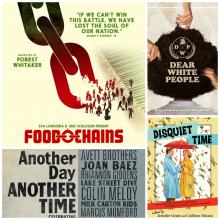
Truth and Satire
The witty film satire Dear White People is a comic entry point into a serious, much-needed conversation about race relations on college campuses. The storylines of four African-American students at a prestigious university spotlight a culture of racism that is easily and dangerously concealed by academia’s progressive posture. dearwhitepeoplemovie.com
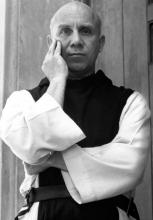
WHILE NOT HERE in person for the celebration of his 100 birthday on Jan. 31, Thomas Merton is certainly present in spirit through the extraordinary number of volumes about and even by him being issued to mark the anniversary—a splendid opportunity for readers to acquaint or reacquaint themselves with the monk often considered the most significant American Catholic writer of the past century.
Perhaps the best place to start is Messengers of Hope: Reflections in Honor of Thomas Merton, edited by Gray Henry and Jonathan Montaldo (Fons Vitae), a collection of more than 100 reflections by monks and activists, scholars, filmmakers, and poets, and Christian, Jewish, and Buddhist practitioners on the significance of Merton for their own lives. Some of the contributors are well known—Joan Chittister, John Dear, Jim Forest, James Martin, Richard Rohr, Huston Smith; others are well known in Merton circles; some are younger voices who one day may become well known but already have valuable insights as to how Merton continues to speak to the needs and hopes of the contemporary world. This is a rich compendium of personal stories that is a delight to dip into or to read straight through.
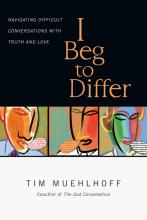
POLICE BRUTALITY, the Affordable Care Act, climate change: When people with differing convictions on issues such as these come together for conversation, some prefer to first set aside the issues and focus on building relationships, while others want disagreements front and center. In his book I Beg to Differ: Navigating Difficult Conversations With Truth and Love, Biola University communications professor Tim Muehlhoff says relationship and honesty are necessary for progress to be made.
“If every conversation we have with others is about the issues that divide us, the intensity will hurt the communication climate,” he writes.
For example, he offers the hypothetical story of an evangelical Christian who wants to share his faith with a Muslim co-worker. Over lunch, the colleagues take time to learn about each other’s differing religious convictions, but the conversation doesn’t invade their work relationship. Back at the office, they return to their easygoing, day-to-day relational habits.
It’s a mistake to begin conversations by trying to convince others of our position, Muehlhoff says. It is better to listen with a sincere desire to understand what the other person believes and why they believe it.

IN NOVEMBER 1964, as the long Cold War heated up again, this time in Vietnam, Trappist monk Thomas Merton set forth a koan to 14 peacemakers: “By what right do Christians protest?” For three days, these activists and theologians—famously uniting Catholic and Protestant faith traditions—met with Merton in the Kentucky hills, grappling with how and why Christians should resist the violence of war.
Historian Gordon Oyer has re-created this meeting so pivotal to the peace movement and—most important—assessed its meaning for our time. The historic retreat is meticulously sourced with detailed textual analysis of the presenters at the retreat and the writers who influenced them. Particularly impressive is the lucid summary of the era and the delicacy and respect with which the author treats cultural and doctrinal differences among the participants.
Ecumenism in peace work is thankfully common today, but in the early ’60s the blending of faith traditions at the retreat was groundbreaking. Even more revolutionary were the two Masses the group celebrated together, with Jesuit priest Dan Berrigan presiding, everyone in the group receiving communion, and John Howard Yoder, a Mennonite theologian, preaching at the second liturgy. (Both practices were proscribed at the time.)
Attendees included Phil Berrigan, later one of the creators of the Plowshares actions for nuclear disarmament, and A.J. Muste, dean of the U.S. peace movement at the time, with years of experience in War Resisters League, the Committee for Nonviolent Action, and the Fellowship of Reconciliation (FOR). FOR’s Paul Peachey and John Heidbrink were instrumental in initiating and organizing the retreat, although neither of them could attend in the end. (Neither could two other invitees—Bayard Rustin and Martin Luther King Jr.)
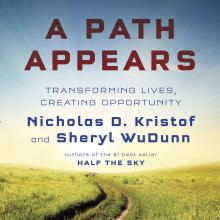
IT’S EASY to lose heart when tackling the painful challenges we live with—poverty, racism, violence, sex trafficking. We volunteer and donate our time and money, but do those efforts really make a difference?
Nicholas D. Kristof, a New York Times columnist, and Sheryl WuDunn, a former Times reporter who works in finance, had the same question; A Path Appears is the result of their investigation. The husband-and-wife team canvassed the giving world, interviewing socially minded people working as individuals or in community with nonprofits, corporations, for-profit organizations, and everything in between. Turns out millions of lives are being transformed next door and across the globe—including our own.
Bernard Glassman, for example, is an aeronautical engineer who wanted to do something about homelessness. After researching the issue for six months, he decided jobs were the most urgent need and started Greyston Bakery in Yonkers, N.Y., a for-profit company whose mission is to employ homeless men and women.
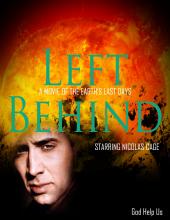
LEFT BEHIND may be a soft target, but once seen, you may realize that it’s a soft target for anyone who has ever been on an airplane, seen what Nicolas Cage is capable of in Leaving Las Vegas, met a Muslim, or not been cryogenically frozen since the era when it was socially acceptable to treat people with dwarfism as punchlines.
It really is worse than most theatrically released movies—shot and edited like a political attack ad/music video mashup, written like a child’s Sunday school lesson, and then strangely denuded of almost anything that would make it identifiably Christian (teasing those who already believe, yet scared of alienating people who just want to see a cheesy disaster movie without heavy proselytization).
The people who made it aren’t bad people, of course. (I’m not sure anyone is, with the line between good and evil running through each human heart and all—although that’s another argument that wouldn’t make it into this film.) The producers are ideologically committed to advancing a message that they were indoctrinated into by an unthinking system—let’s call it the Christian Industrial Entertainment Complex. They’ve stumbled upon the money and basic skill to make movies. They think that what they’re doing is changing the world for the better, but that’s doubtful—it’s more likely just reinforcing the closed-set worldview of the CIEC’s pre-committed adherents. This isn’t new, so I’m not too concerned about one more example of bad art masquerading as religious experience.
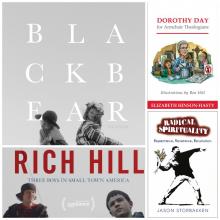
Calling to the Deep
In Radical Spirituality: Repentance, Resistance, Revolution, Jason Storbakken, co-founder with his wife, Vonetta, of the Radical Living Christian community in Brooklyn, N.Y., fluidly weaves scripture work with political critique and his own fascinating history in this call to find deeper life in Christ found on the margins. Orbis

AS LINUS ONCE pointed out, Charlie Brown could turn a wonderful thing like Christmas into a problem.
Well, America’s post-industrial economy, in which the children of middle-class families frantically compete for slices of a shrinking pie, has done Charlie Brown one better: Our culture has managed to turn children’s sports into a problem. More and more, the fun and games of bygone days are being displaced by a network of pay-to-play competitive club sports organizations—gated communities of the youth sports world that are marketed to middle-class parents as the only route to coveted college athletic scholarships.
Two sets of statistics tell the story. As of 2010, according to the Columbus Dispatch, youth sports organizations took in at least $5 billion per year. In addition, according to a 2013 National Association of Sports Commissions study reported in the Dallas Morning News, the travel industry associated with youth sports is worth another $7 billion a year. And all that money is being spent on fewer kids. According to the Wall Street Journal, participation of kids age 6 to 17 in the most popular U.S. team sports fell by about 4 percent between 2008 and 2012 while the population of 6-to-17-year-olds fell by only 0.6 percent.
Competitive youth sports is becoming an elite phenomenon. Kids whose families can afford it spend the year migrating from tournaments to training camps. Meanwhile, the majority of kids just give up and stay home to play video games.

INSIDE TOWN HALL, New York’s legendary concert venue, the dusty twang of a harmonica slices through the low din of the crowd filling the 1,500-seat auditorium. Most are likely here for the headliner, singer-songwriter Patty Griffin, who will take the stage after this, a performance by her opening act, Parker Millsap.
The bluesy riffs from Millsap’s harmonica are intense, long and wailing, before fading into the slow, dirty licks of a slide guitar. Then a voice, old and soulful, throbs through the room, crying out the first line of the old gospel standard “You Gotta Move” and shocking many in the audience, residents of a city where very little is shocking. You can see the wave of surprise move like a serpent across the room, with people turning to their companions, eyebrows raised and a whisper on their lips.
It’s the age that gets them—the man standing at center stage, flanked by two bandmates and looking like a rockabilly idol, with his gelled quiff and rolled-up shirt sleeves, isn’t the 60-year-old blues singer he sounds like. No, he is baby-faced, young—barely even 21—and yet he’s pulling this song from some secret, battered place inside him that’s far older than his years, and matching it with a sensual intensity that sizzles in the audience. By the time Millsap allows the last note from his weathered voice to fade, he has commanded the undivided attention of one of the world’s toughest crowds.
And they are raring for more.
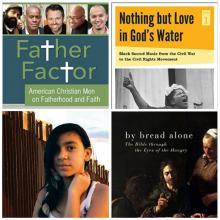
Paternal Insights
Father Factor: American Christian Men on Fatherhood and Faithoffers diverse perspectives from men under 40 who are rooted in a broad spectrum of Christian traditions, ethnicities, and backgrounds. Edited by R. Anderson Campbell, this is the fifth volume in the I Speak for Myself series. White Cloud Press
Sing Freedom
In Nothing but Love in God’s Water: Volume I, Black Sacred Music from the Civil War to the Civil Rights Movement, gospel music scholar Robert F. Darden explores the sustaining and revolutionary power of sacred song in African-American history. Penn State Press
THE CRY OF the church to the world should be “Forgive us.”
At a time when the American church struggles with finding its place in the world and struggles with asserting its identity, could the church be known as the community that models confession, repentance, and the seeking of forgiveness? At this moment in history, the American church is often ridiculed or portrayed as unforgiving and ungracious. Could the church offer a counter-narrative, not of defensiveness or derision but of an authentic confession and genuine reconciliation? By examining seven different areas where the church has committed sin, we ask the church to consider the spiritual power and the theological integrity of a church that seeks forgiveness for those sins.
Our scriptures testify to the necessity of confession. Confession is central to the Christian faith. The importance of confession arises from the Christian view of sin. Sin is a reality and must be taken seriously. Evangelicals consistently begin our gospel presentation with the centrality of sin to the human experience. American evangelicals often assert that the beginning of the work of God’s forgiveness is the recognition of our need for God because of human sinfulness.
It is antithetical to the gospel when we do not confess all forms of sin—both individual and corporate. The reason evangelicals can claim to be followers of Jesus is because there has been an acknowledgement of sin and the seeking of God’s grace through Jesus Christ that leads to the forgiveness of sin.

CHEF IS A small-budget film with an all-star cast and artful storytelling. Jon Favreau, who also directed Iron Man, stars in his own film as a head chef named Carl Casper at an acclaimed restaurant in Los Angeles. Casper is left in a vocational tailspin after a scathing review and a public meltdown. He loses his inspiration and finds himself in an existential crisis.
In Chef Casper’s quest to recover his culinary mojo, he takes a trip to Miami and buys a used food truck. The film plays on the power of relationships in a messy, winding, but authentic path. Chef Casper’s community—his ex-wife, his son, and his best friend—are invited into the one thing Casper loves to do, demonstrating how community, at its best, can propel us on the way we should go.
Each truck stop on the journey back to California fills Chef Casper with new vision and adds distinctive ingredients. He makes his way to once again bring beauty and flourishing back to his street corner of the world.
My small group at church watched Chef together and bonded over it. We explored themes of vocation—how we can contribute to flourishing through the distinctive things “we’re good at.” And how activism isn’t just about waving the proverbial picket sign; it also can be about loving what we do with great friends.
IN 1998, AWARD-WINNING writer Linda Lawrence Hunt and her husband, Jim, were forced to consider a question no parent wants to ask: How do you find meaning in life after losing your child?
Their 25-year-old daughter, Krista Hunt Ausland, had just died in a bus accident in Bolivia while volunteering with the Mennonite Central Committee.
“Your joys become more intense,” consoled a friend whose family had also lost a child.
This resonated with Linda, especially since Krista was known for her energy and enthusiasm. Linda and her husband, now retired professors of English and history at Whitworth University, had always encouraged Krista to travel and take part in community service, but even they were amazed by the intense joy Krista exuded serving as a school teacher in inner-city Tacoma, Wash., or volunteering in poor communities in Latin America. Writing about that joy might help to recover some of it in Linda’s own life, she thought.
Fifteen years later, Linda’s newest book is more than just an ode to a remarkably happy daughter. Pilgrimage through Loss: Pathways to Strength and Renewal after the Death of a Child is a collection of ideas and insight from more than 30 parents who decide in their darkest hours to “face grief in creative and intentional ways.” The book, which contains study questions at the end of each chapter and references new research on grief, is intended as a resource for grieving parents, as well as for those hoping to support them in the right ways and at the right times. “Closure is an illusion,” explains Linda, but she describes multiple examples of parents finding strength and even joy in sacred spaces and rituals, as well as in giving and receiving symbolic acts of kindness.